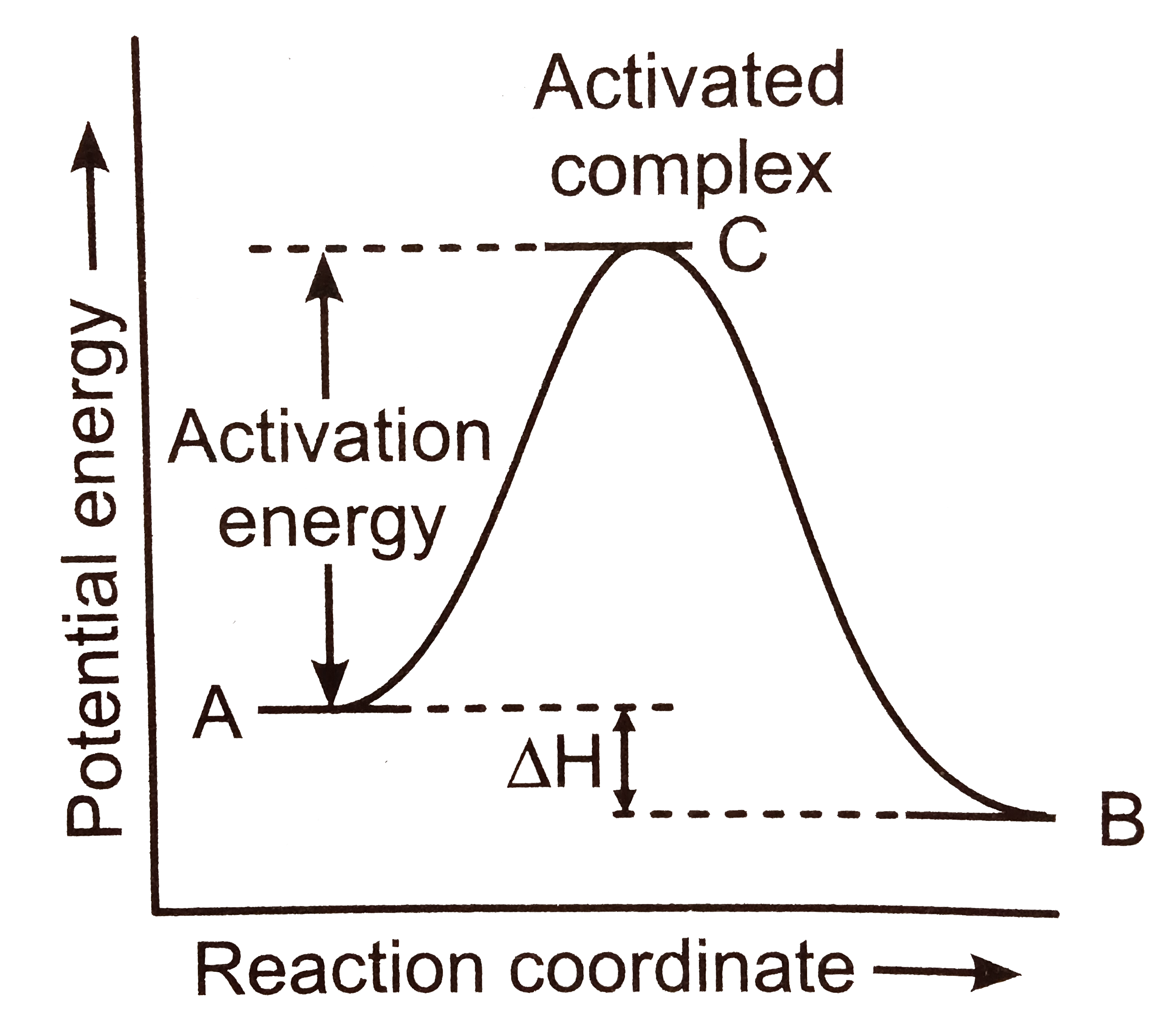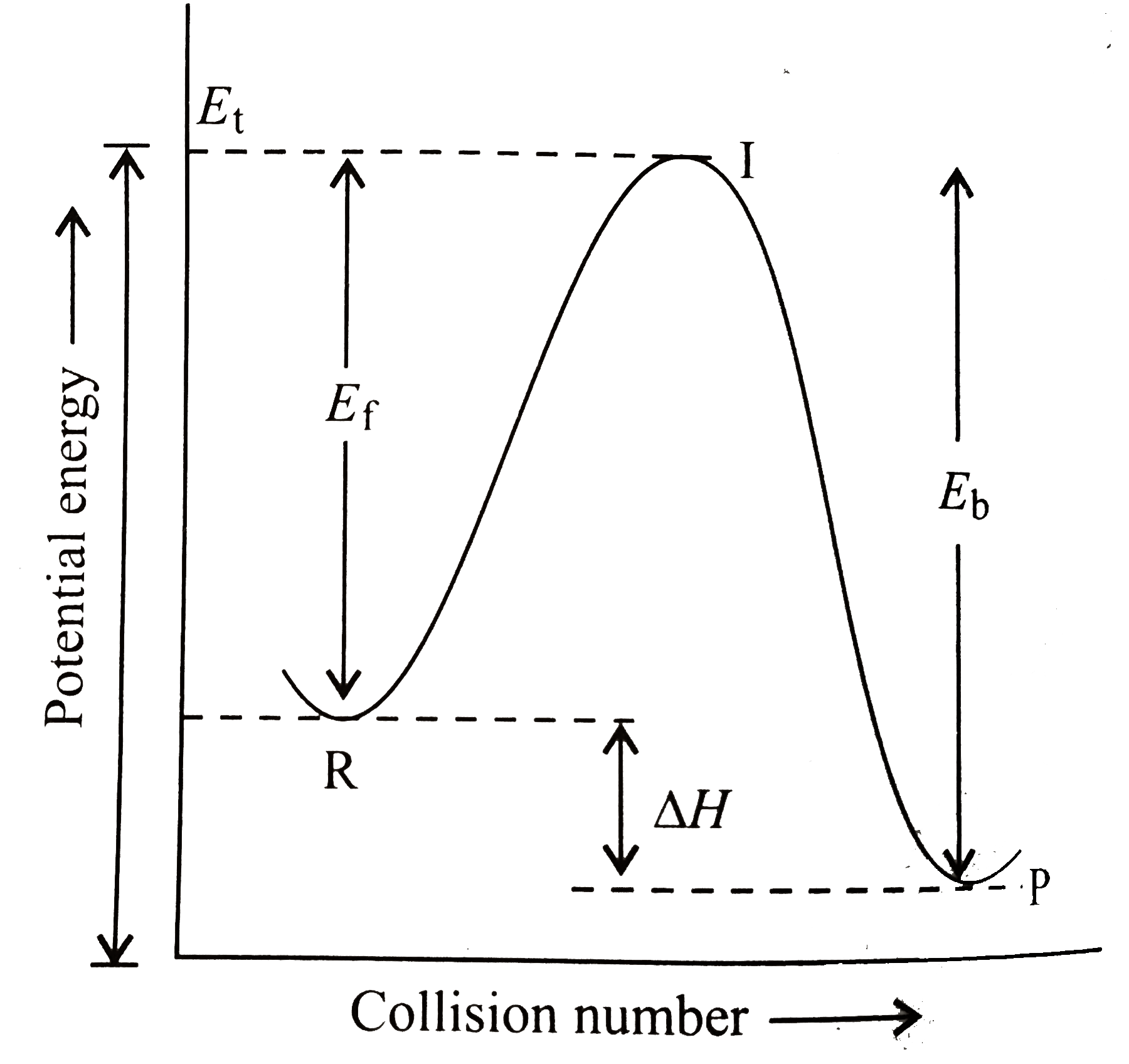The energy required to form the intermediate, called activated complex (C) is known as activation energy (Ea). The diagram is obtained by plotting potential energy vs. reaction coordinate. Reaction coordinate represents the profile of energy change when reactants change into products.
Some energy is released when the complex decomposes to form products. So, the heat of the reaction depends upon the nature of reactants and products.

If a reaction A+B→C, is exothermic to the extent of 30kJmol−1 and the forward reaction has an activation energy of 249kJmol−1, the activation energy for reverse reaction in kJmol−1 is:
(a) 324
(b) 279
(c ) 40
(d) 100
The correct Answer is:b
ΔH=Ef−Eb
−30=249−Eb
∴Eb=279kJmol−1
Topper's Solved these Questions
- CHEMICAL KINETICSBook:P BAHADURChapter:CHEMICAL KINETICSExercise:Exercise 1
Explore 2 Videos
- CHEMICAL KINETICSBook:P BAHADURChapter:CHEMICAL KINETICSExercise:Exercise 3A
Explore 2 Videos
- DILUTE SOLUTION AND COLLIGATIVE PROPERTIESBook:P BAHADURChapter:DILUTE SOLUTION AND COLLIGATIVE PROPERTIESExercise:Exercise 9 Advanced Numerical
Explore 12 Videos
Similar Questions
Knowledge Check
The Activation energy for a chemical reaction mainly depends upon
AtemperatureBnature of reacting speciesCconcentration of the reacting speciesDcollision frequencyThe Activation energy for a chemical reaction mainly depends upon
ATemperatureBNature of reactantsCNumber of collisions per unit timeDConcentration of reactantsActivation energy of any reaction depends on
ATemperatureBNature of reactantsCNumber of collisions per unit timeDConcentration of reactants
A colliison between reactant molecules must occur with a certain minimum energy before it is effective in yielding Product molecules. This minimum energy is called activation energy Ea Large the value of activation energy, smaller the value of rate constant k. Larger is the value of activation energy, greater is the effect of temperature rise on rate constant k.

Ef= Activation energy of forward reaction
Eb= Activation energy of backward reaction
ΔH=Ef−Eb
Ef= threshold energy
If a reaction A+B→C is exothermic to the extent 30kJmol−1 and the forward reaction has an activation energy of 249kJmol−1 the activation energy for reverse reaction in kJmol−1 is
View Solution
(E=activation energy )
Relation between activation energies os above reactions is:
View SolutionAn endothermic reaction A ⇔ B has an activation energy as x kJ mol−1 of A. If energy change of the reaction is y kJ, the activation energy of the reverse reaction is
View SolutionIn the given graph the activation energy, Ea for the reverse reaction will be

Activation energy for the reverse reaction will be
View SolutionAn endothermic reaction A → B has an activation energy as × kJ mo1−1 of A. If energy change of the reaction is y kJ, the activation energy of the reverse reaction is :
View Solution
